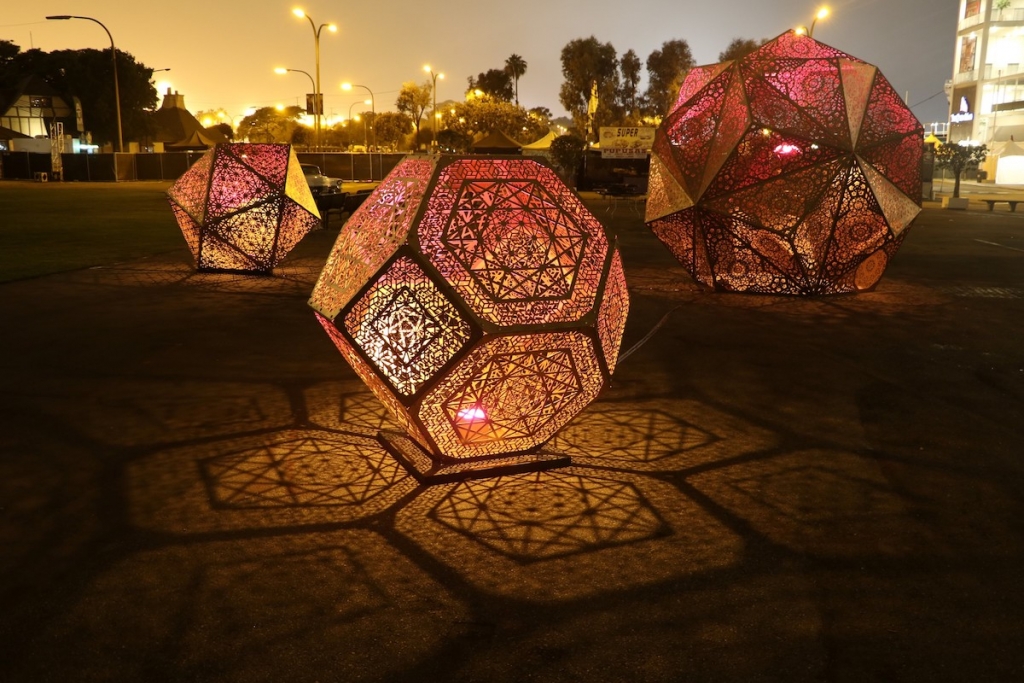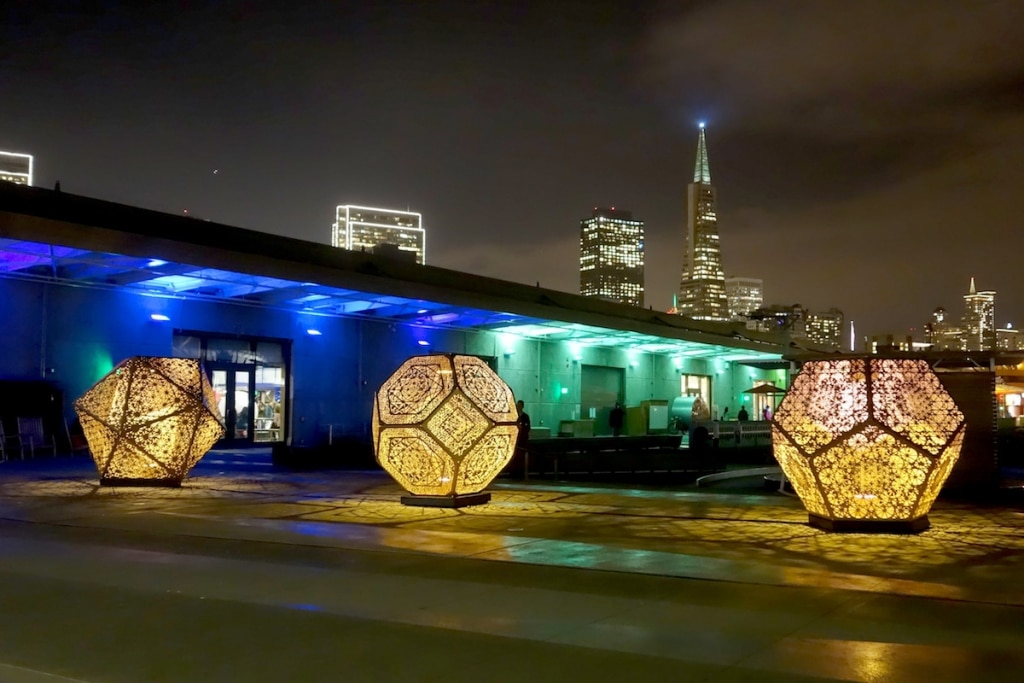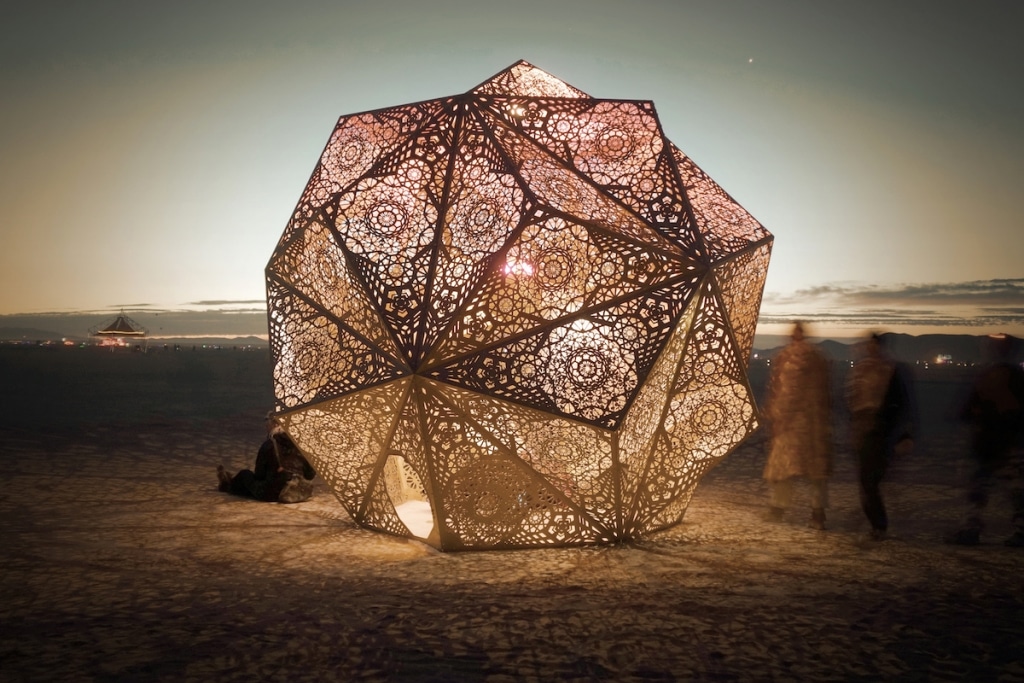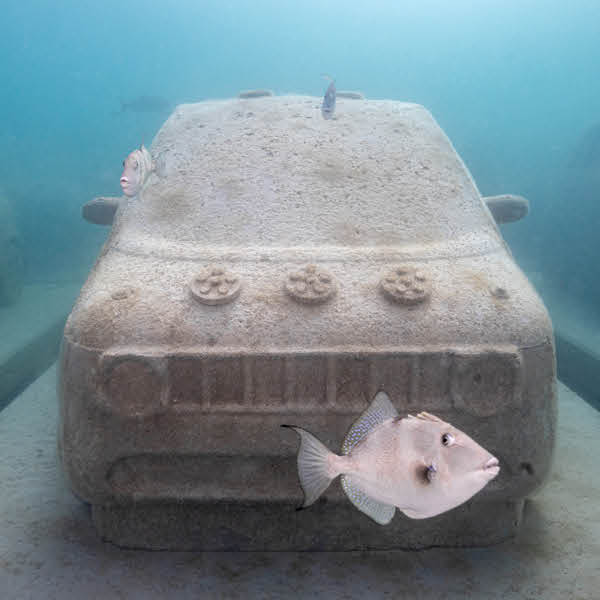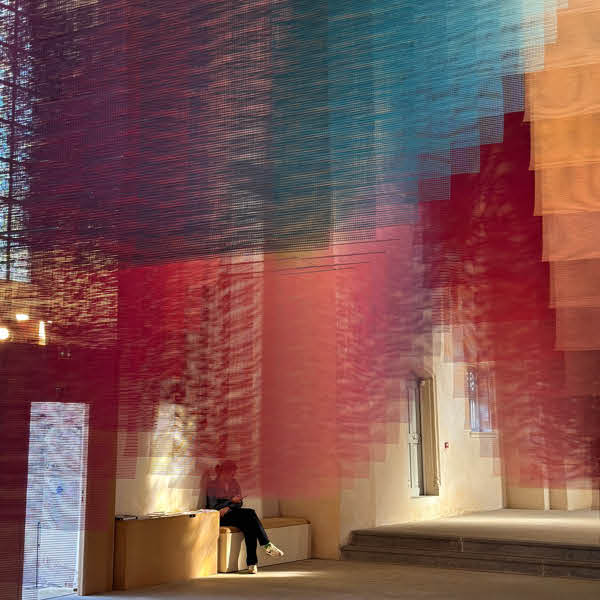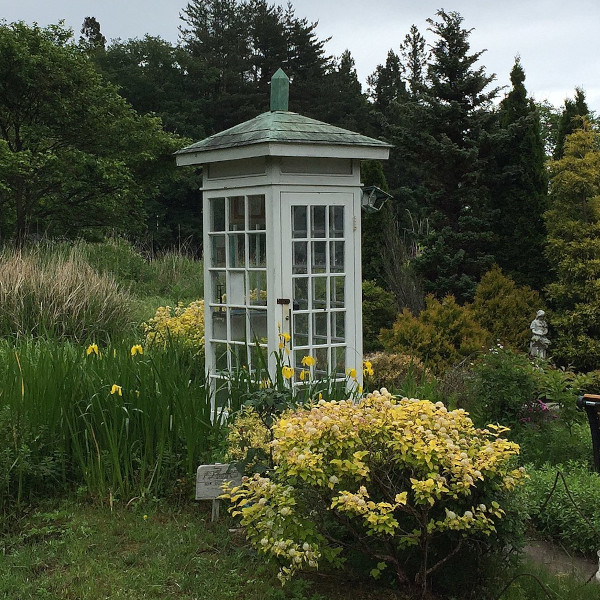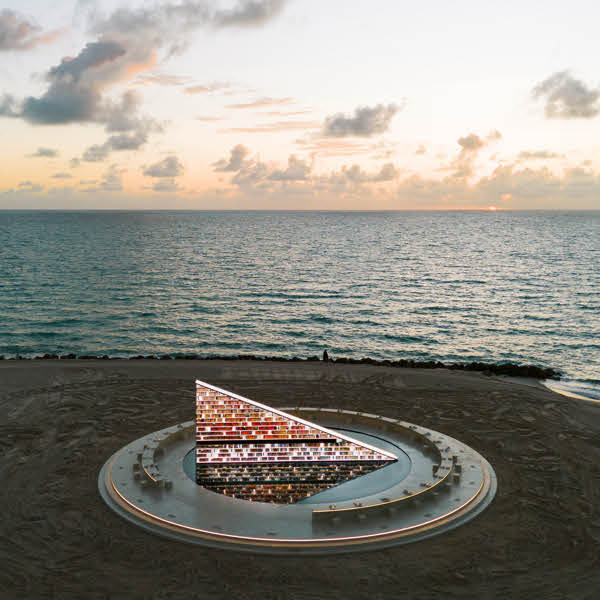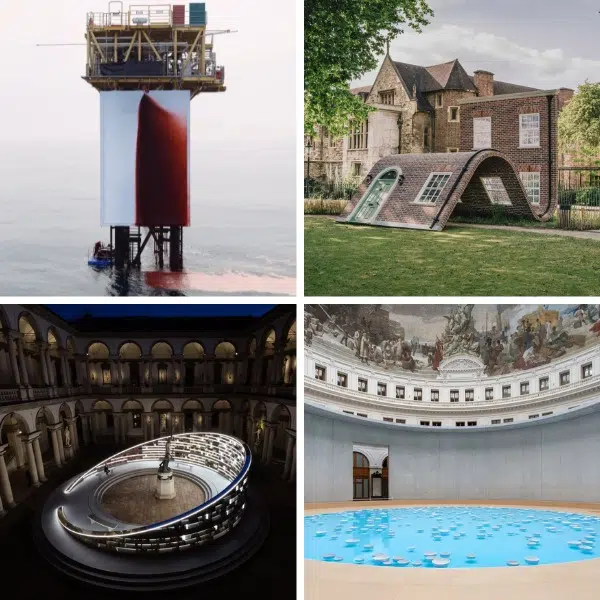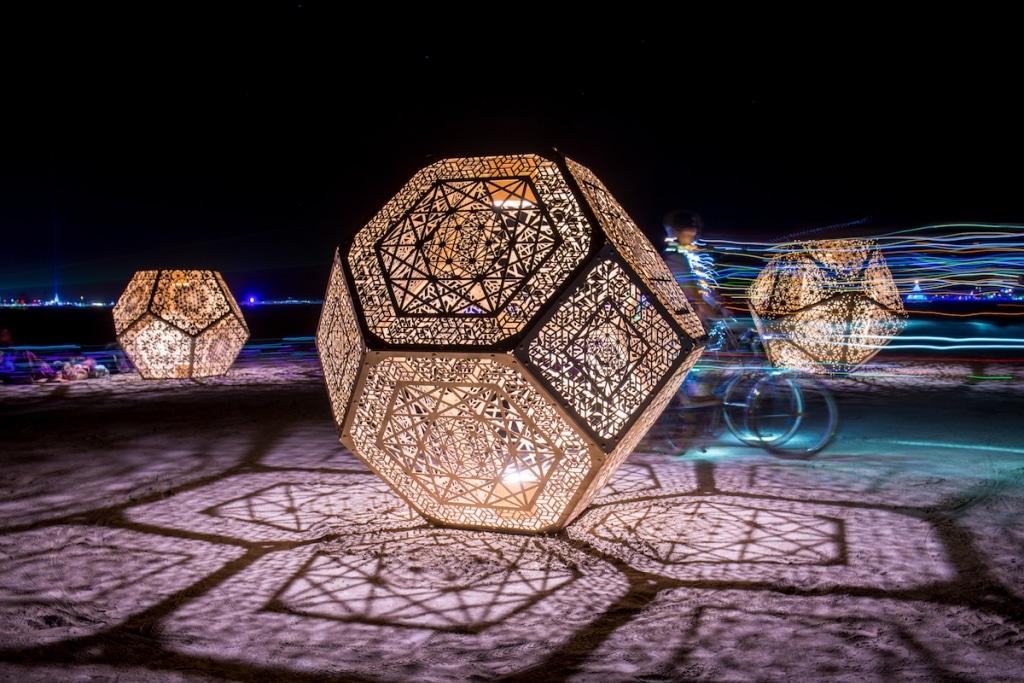
Photo: Lukasz Szczepanski
Inspired by art, physics, math, light, and technology, the incredible art installations of HYBYCOZO have been an absolute sensation since they first went viral after the 2016 Burning Man Festival. By laser cutting intricate patterns into large polyhedrons, artists Yelena Filipchuk and Serge Beaulieu have created a striking visual identity through their collaboration. Over the past several years, their work has appeared across the globe—in civic installations in Singapore and Dubai to exhibitions at the Smithsonian's Renwick Gallery.
As early adopters of laser cutting, Filipchuk and Beaulieu have blazed a trail for how this technology can be adopted by artists. Their work, filled with precision and detail, somehow remains fluid and organic through the use of lighting and the evolving nature of the installations, as shadows dance around the sculptures.
Now, as HYBYCOZO evolves, they've also made their work accessible to the public through their consumer brand, COZO. Here, lovers of their geometric art installations can find replicas of their work in the form of tables lamps or motifs translated into delicate jewelry.
Currently, HYBYCOZO—which stands for Hyperspace Bypass Construction Zone—continues their research on geometry with their largest ever commission for the city of Oakland. In between projects, we had the chance to speak with Filipchuk about the evolution of her partnership with Beaulieu and how she sees HYBYCOZO continuing to evolve. Read on for our exclusive interview.
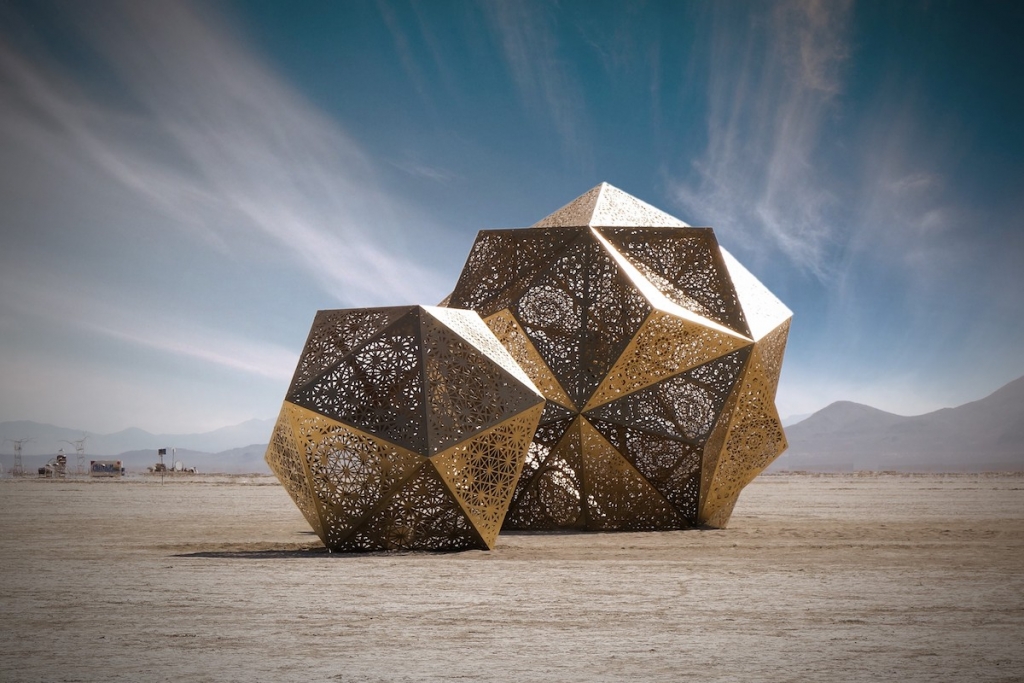
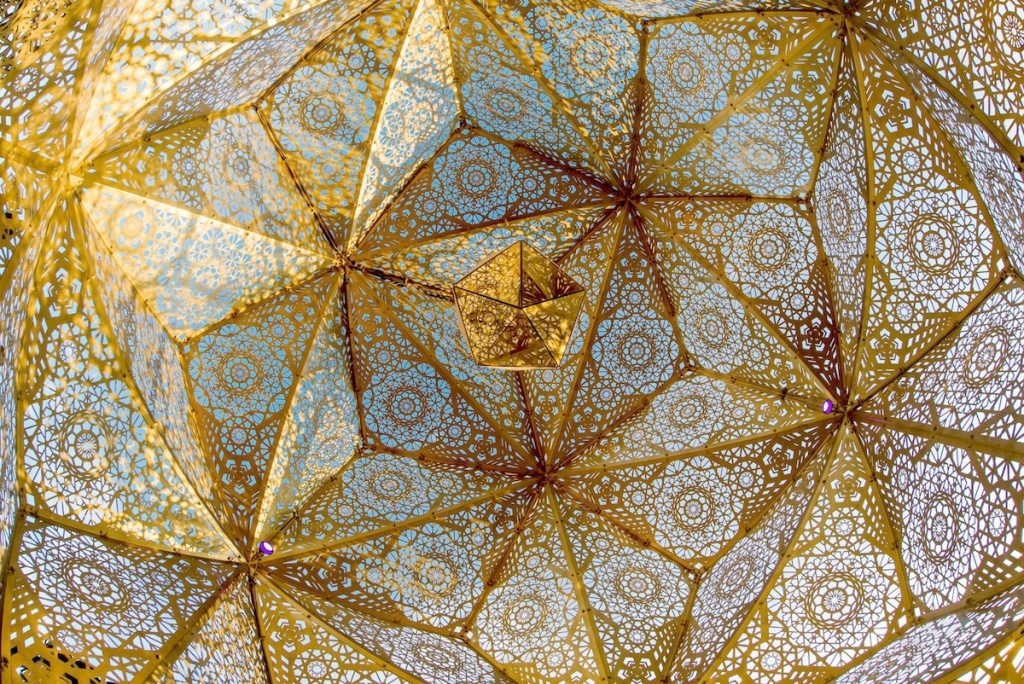
Photo: Daniel Kelly Brown
How did the idea for HYBYCOZO come about?
Serge and I met living in the Bay Area in 2008. We had both been attending the Burning Man Arts Festival for many years when we decided to work on a project together. Both of us have individual art practices, with Serge's background being in industrial design and mine in ecological arts. But we are both fascinated by the intersection of science and art—the patterns that appear in nature, particle physics… Math, to us, seems to have a resonant quality that the eye and the heart respond to.
We were learning and watching a lot of videos about the geometry of nature, but one TEDx talk really changed our whole lives. It's called An Incredibly Simple Explanation for Everything by Garret Lisi. It just really struck us that the fundamental structure of the universe would reveal these geometric patterns and that's something humans would find innately beautiful.
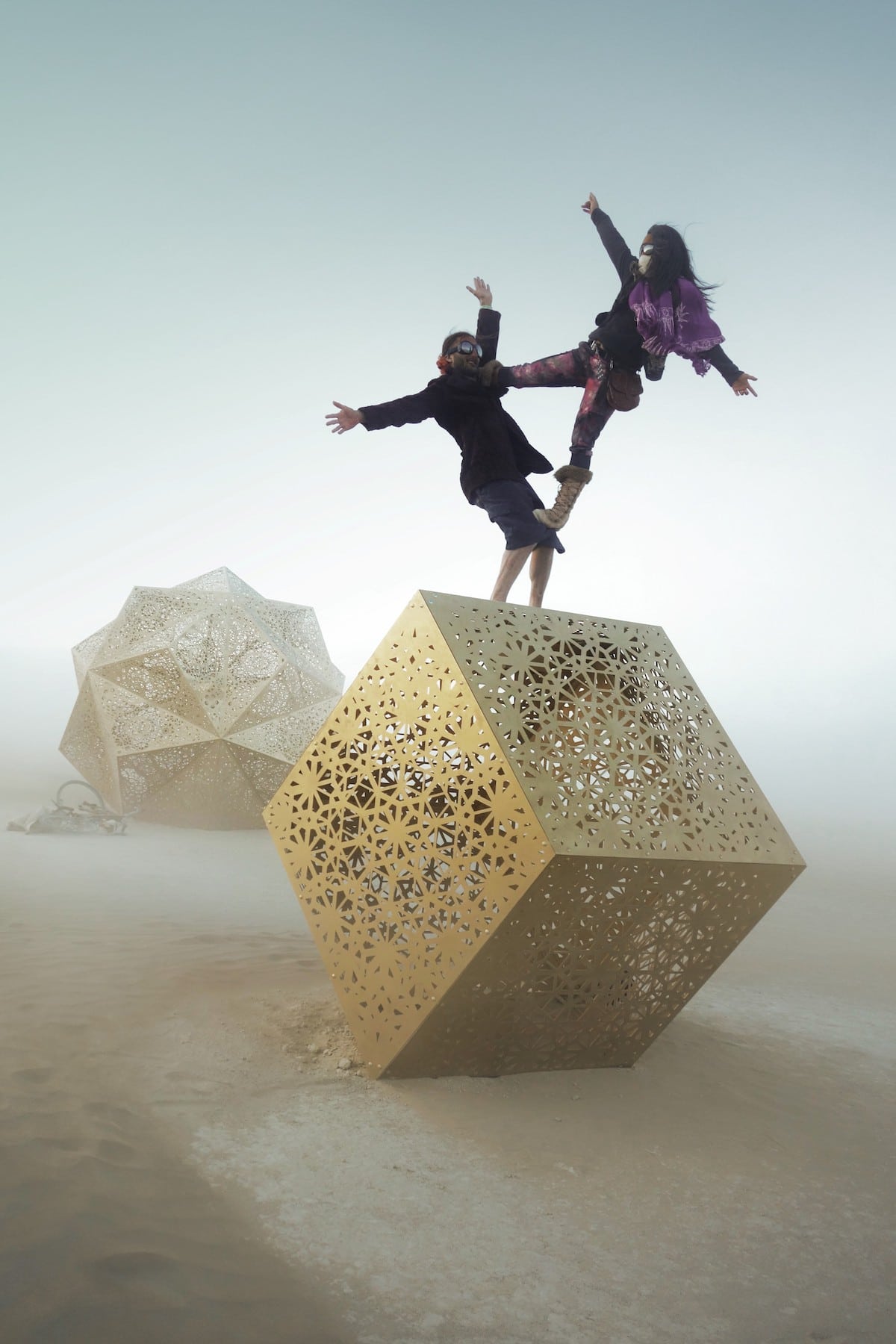
What was the creative process for your first pieces and what did you learn from their fabrication?
We started experimenting with laser cutting almost as soon as it became available to the average person, so there weren't that many resources for figuring out how to do it correctly. It took a lot of experimentation and having the patience to just being willing to sit in front of the laser cutter for hours and hours to refine the process.
Creatively, I think it has always almost felt like a bolt of lighting when we were creating our first early pieces. You'd be working on a new pattern or sculpture for a while and then suddenly you just knew that you had the one! After the early pieces, I feel like we almost created our own geometric language and vernacular to refer to some of these geometries because they really do follow rules and it's possible to actually visualize the evolution of a pattern or see how a 2D pattern communicates with a 3D form.
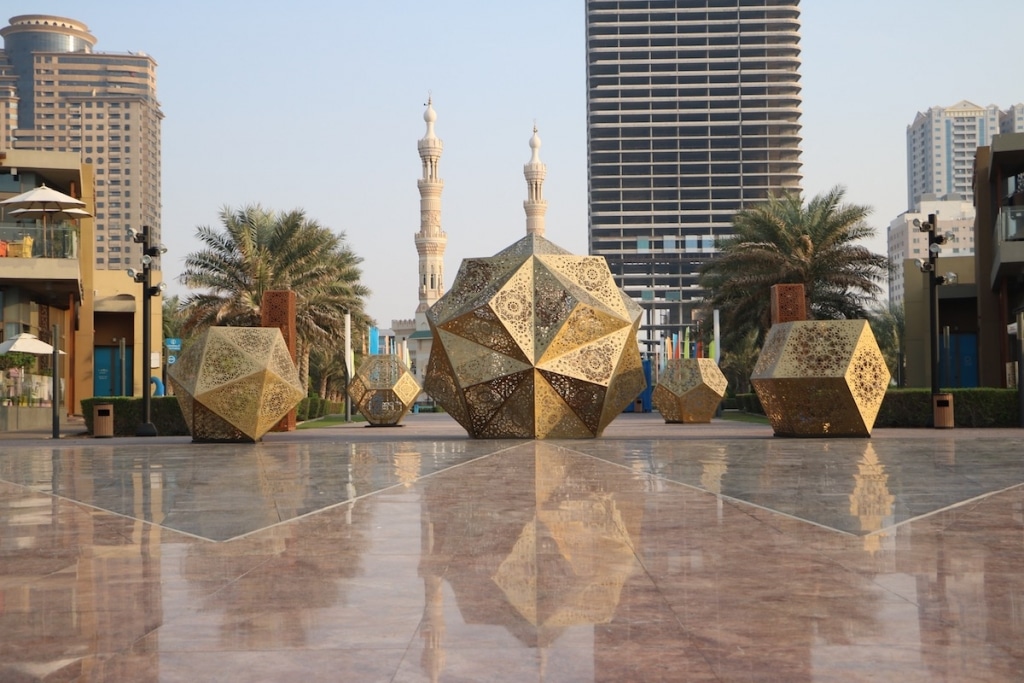
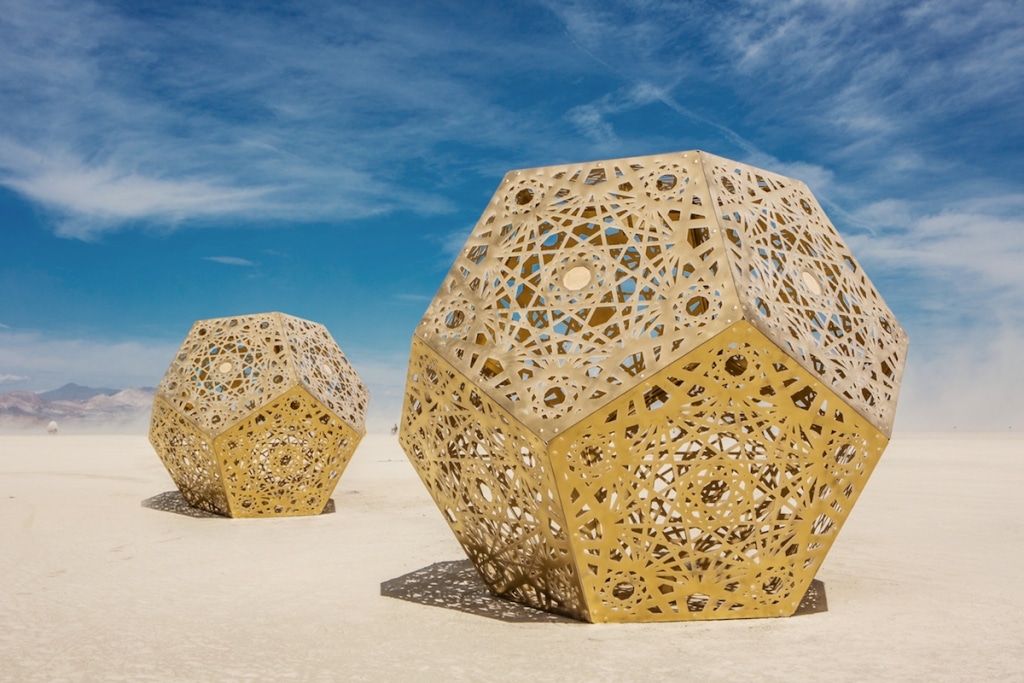
How have the HYBYCOZO installations evolved over time?
There have been several types of evolutions, first in our understanding of geometry. Our very first installation was three platonic solids, which are the most basic, universal polyhedra. From there, we expanded to more complex geometries like Archimedean solids, Catalan Solids, and then to stellated icosahedrons, and now are expanding past classic geometry and creating more representation or abstract forms.
I would say our experimentation with different materials and the evolution of LEDs over the past 5 years have been the most exciting developments to me personally. It's an exciting process to try something for the first time and have it blow you away with an unexpected result.
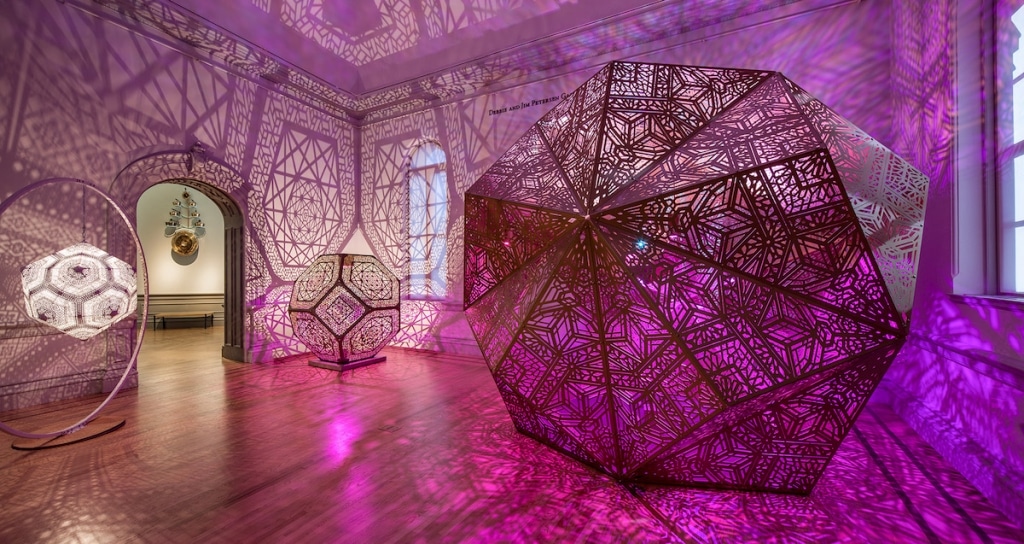
Photo: Ron Blunt
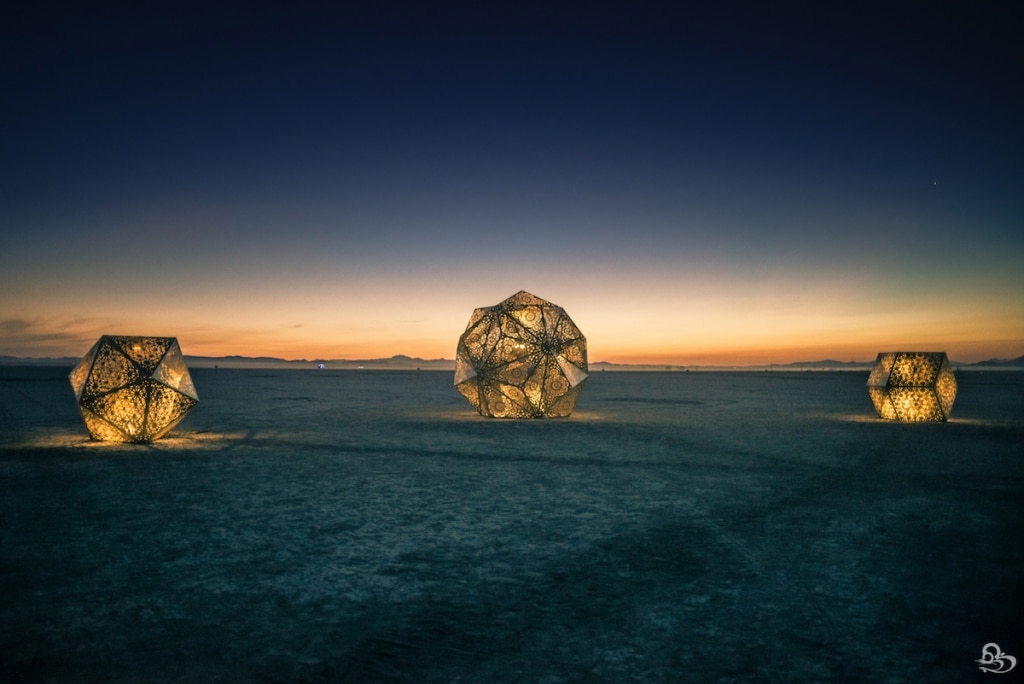
What are your biggest challenges as artists?
I think with big projects, coming to terms with how long they really take from the idea to design to structural engineering to design engineering to prototyping to fabrication to finishing… Rome wasn't built in a year! However, when you do learn to give yourself time, we have found more opportunities to learn and perfect our fabrication techniques.

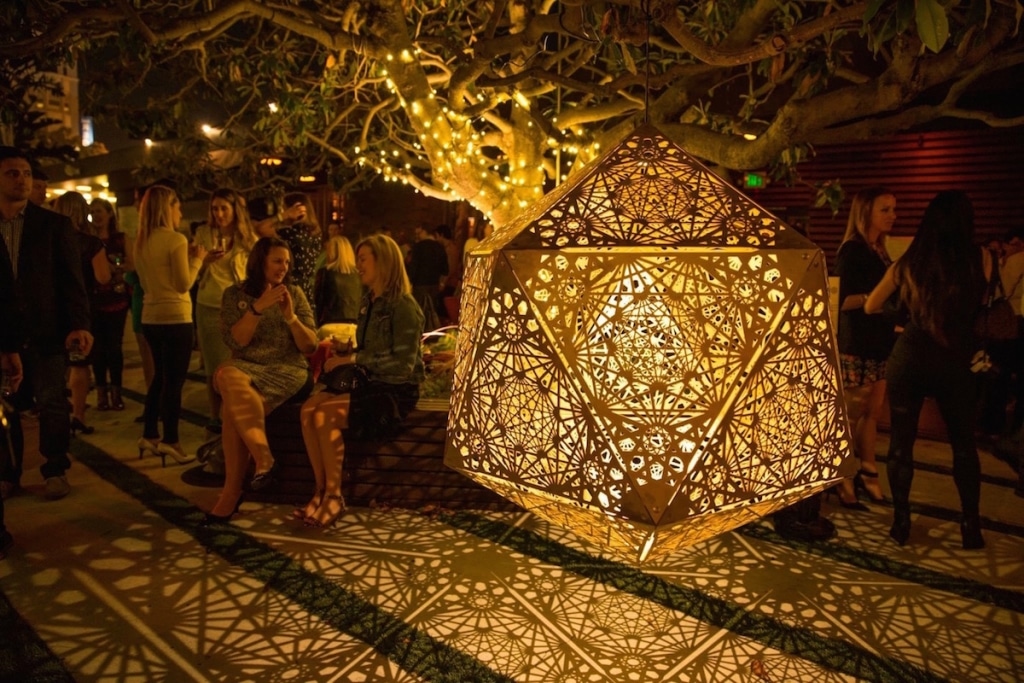
You also have COZO, which transforms your large-scale installations into lighting and jewelry, among other things. When did that begin?
Well, when we were first starting to design our first sculptures, we had to make small versions as models and we had to test the lighting in the small versions to see a preview of what the lit versions would look like. Out of that, we realized that these sculptures would also make incredible smaller scale art pieces for the home. We did a Kickstarter for our first Burning Man installation, which helped us tremendously, and we kept getting requests for the “rewards” we created after it was done. So COZO was a natural evolution of doing a community-supported art process.
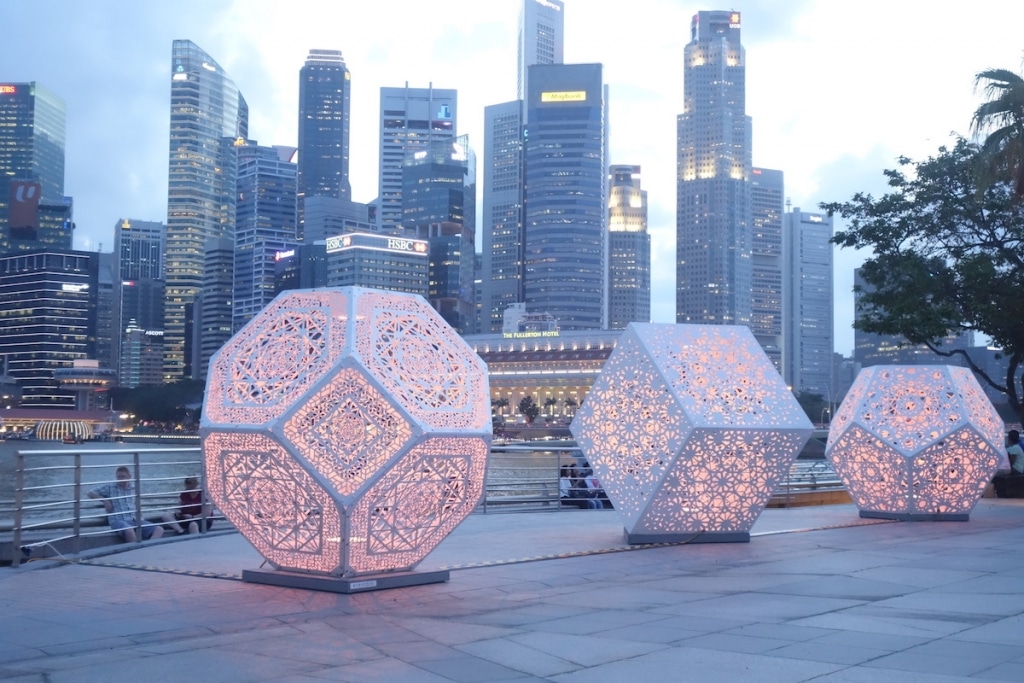
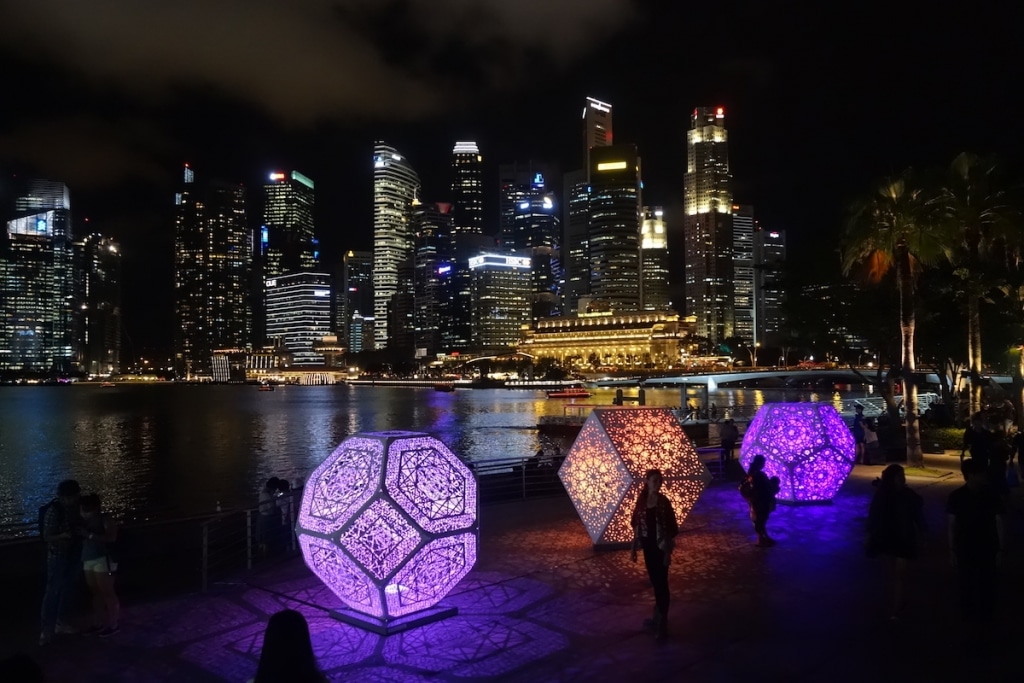
Can you share a bit about the process of translating your art installations into usable products like lamps and jewelry?
COZO really became something special to us when we realized that buying a COZO lamp was many people's first foray into buying art! It may be a lot of people's first art piece and becomes something they truly treasure. That feeling of someone being able to bring our work home really drives us to continue to make amazing items at an accessible price point.
Not everyone can fit a 7-foot sculpture in their home, but hopefully, if you really love the geometric forms and the light projections, you can get a smaller version.
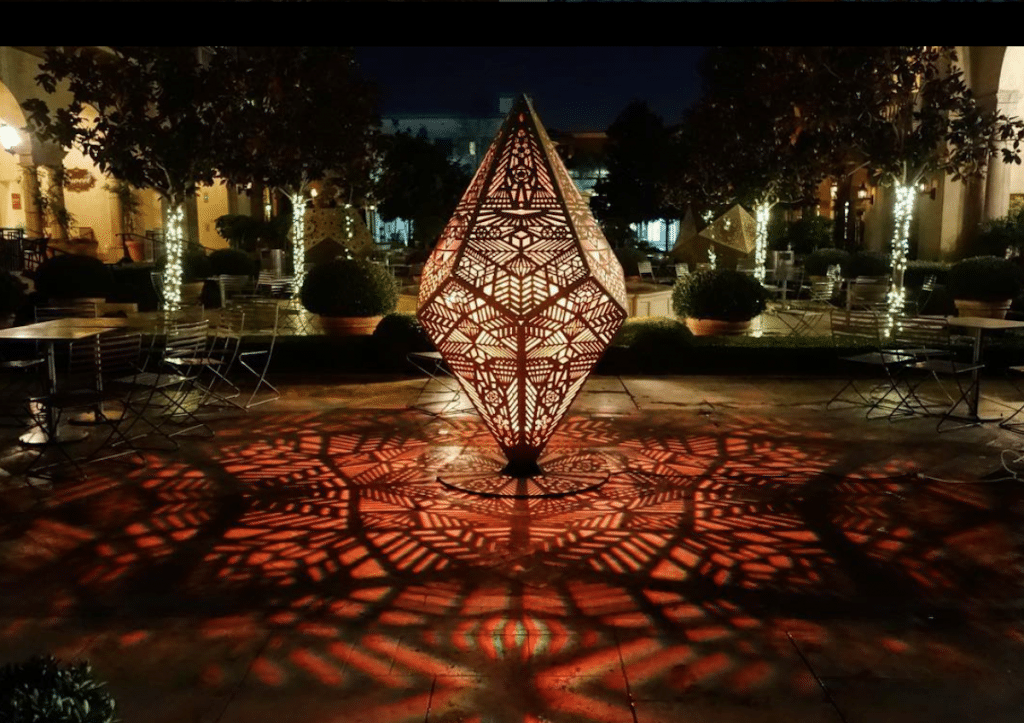
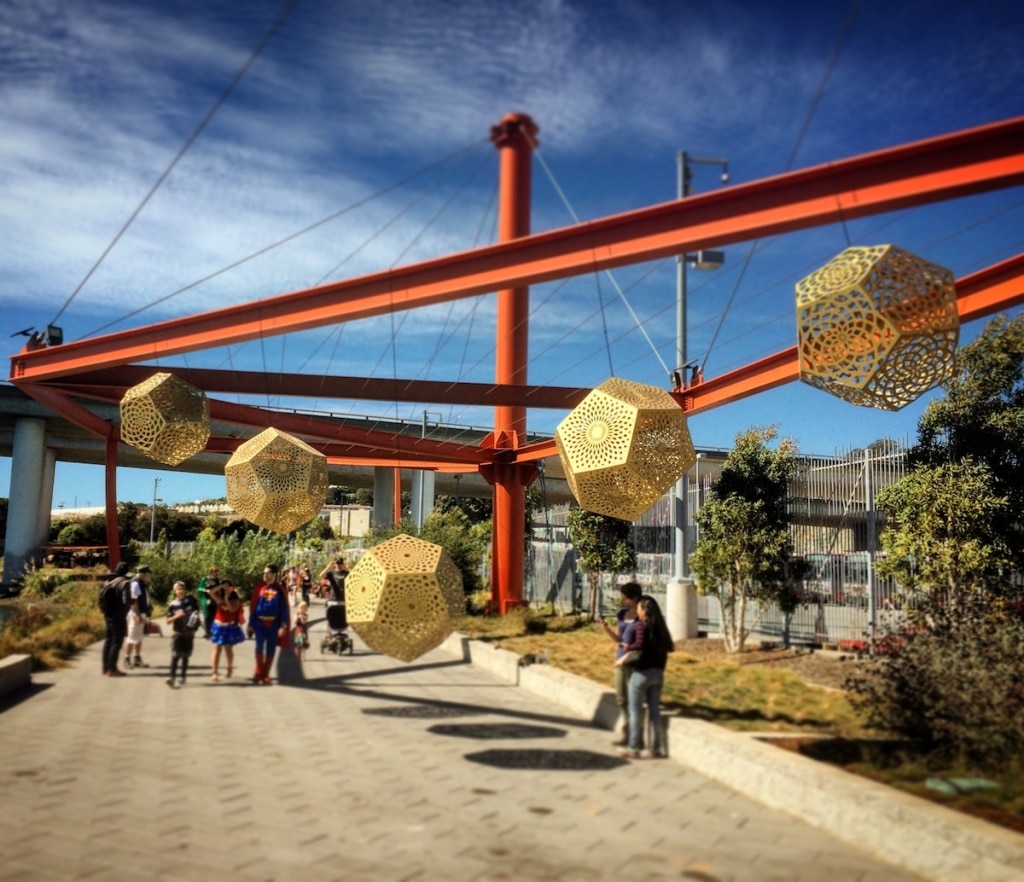
How do you see the project evolving in the next five years?
We are currently working on our largest scale project, a public-commissioned set of artworks for the city of Oakland. They are representative of the oak tree on one side, a public plaza, and then on the other, we have eight laser-cut California poppies. We've really loved engaging with natural forms and I predict are going to be integrating more organic geometry and pattern into our work.
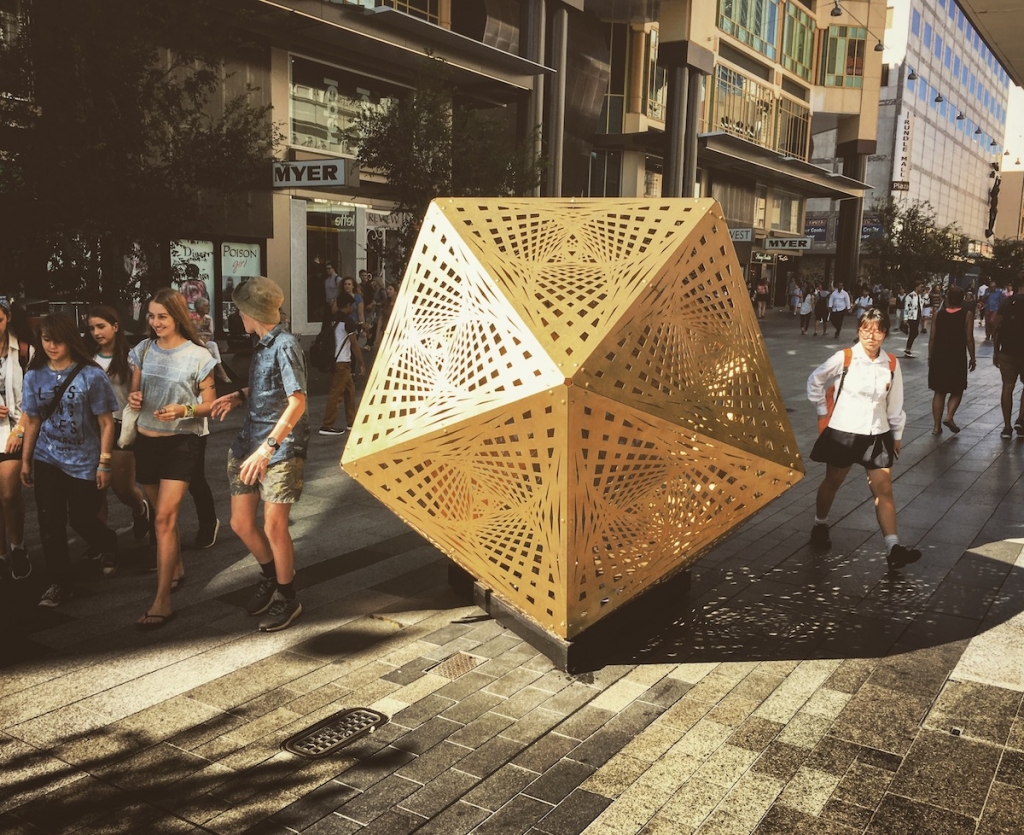
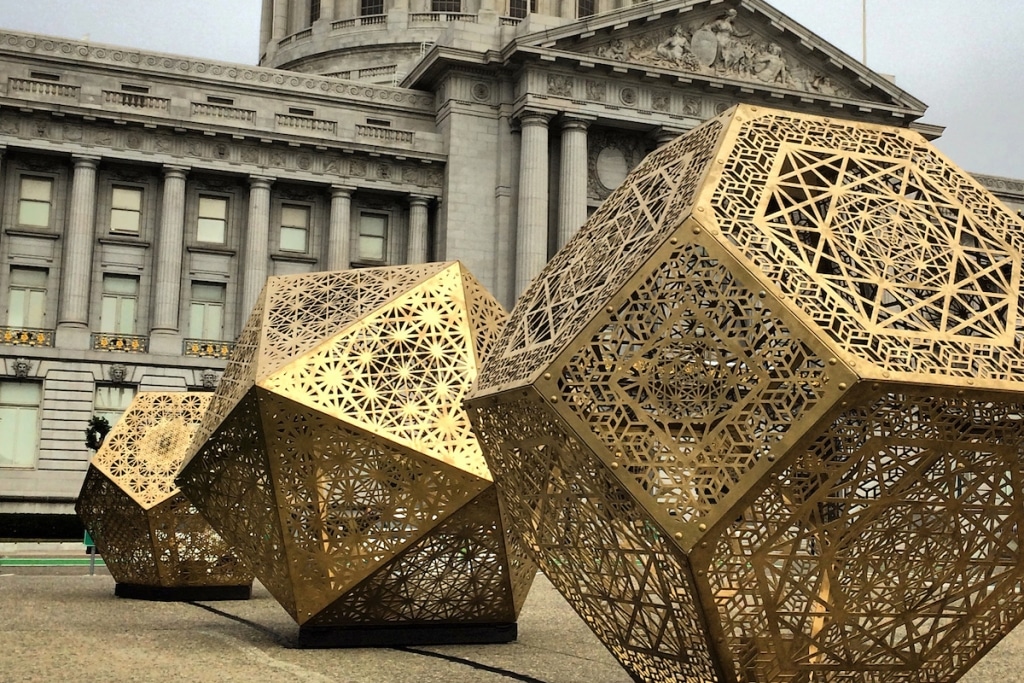
What do you hope that the public takes away from your work?
I hope that when they experience a HYBYCOZO installation there is a feeling of wonder and joy—a sense of amazement at the form, light, and shadow. I hope that they interact with the sculptures with a sense of curiosity and wonder about the geometry of the shape and the meaning of the pattern. I hope in the public sphere, our installations feel like a place of refuge and a place to find some peace in a busy city environment.
We are also working on starting a non-profit focused on Math Art Education called MAE. It will provide resources for educational lessons and opportunities for activities around our public sculptures. We are also working on designing Augmented Reality resources that you'll be able to access from your phone to enhance the learning experience.
